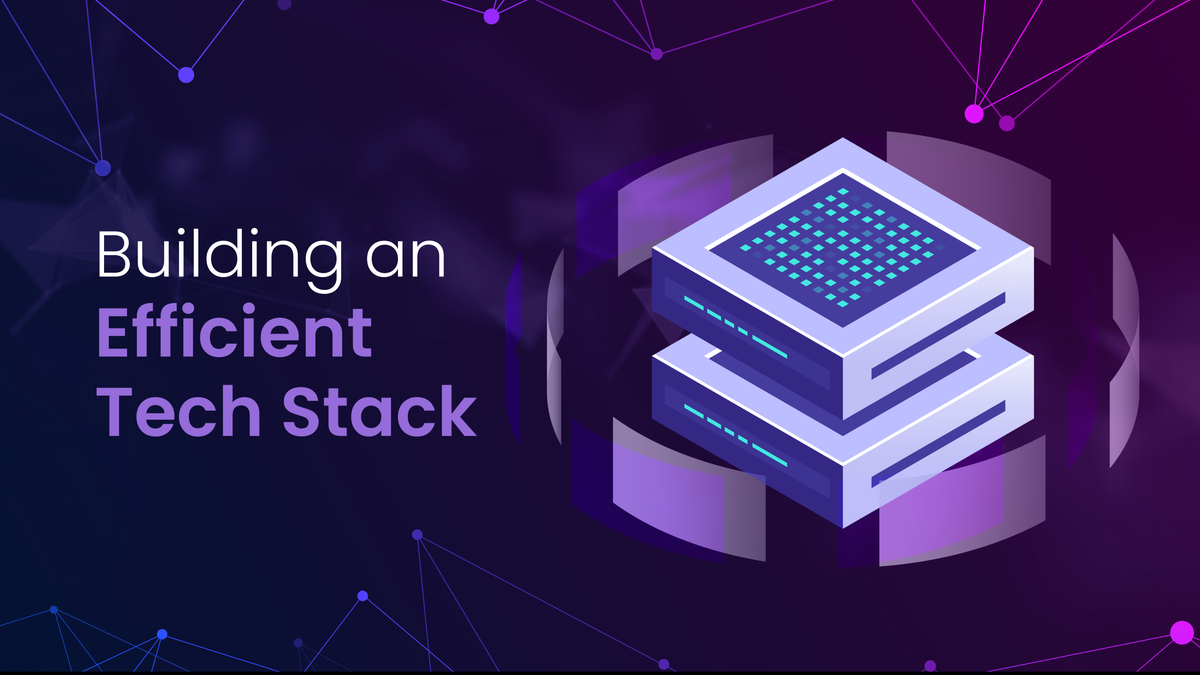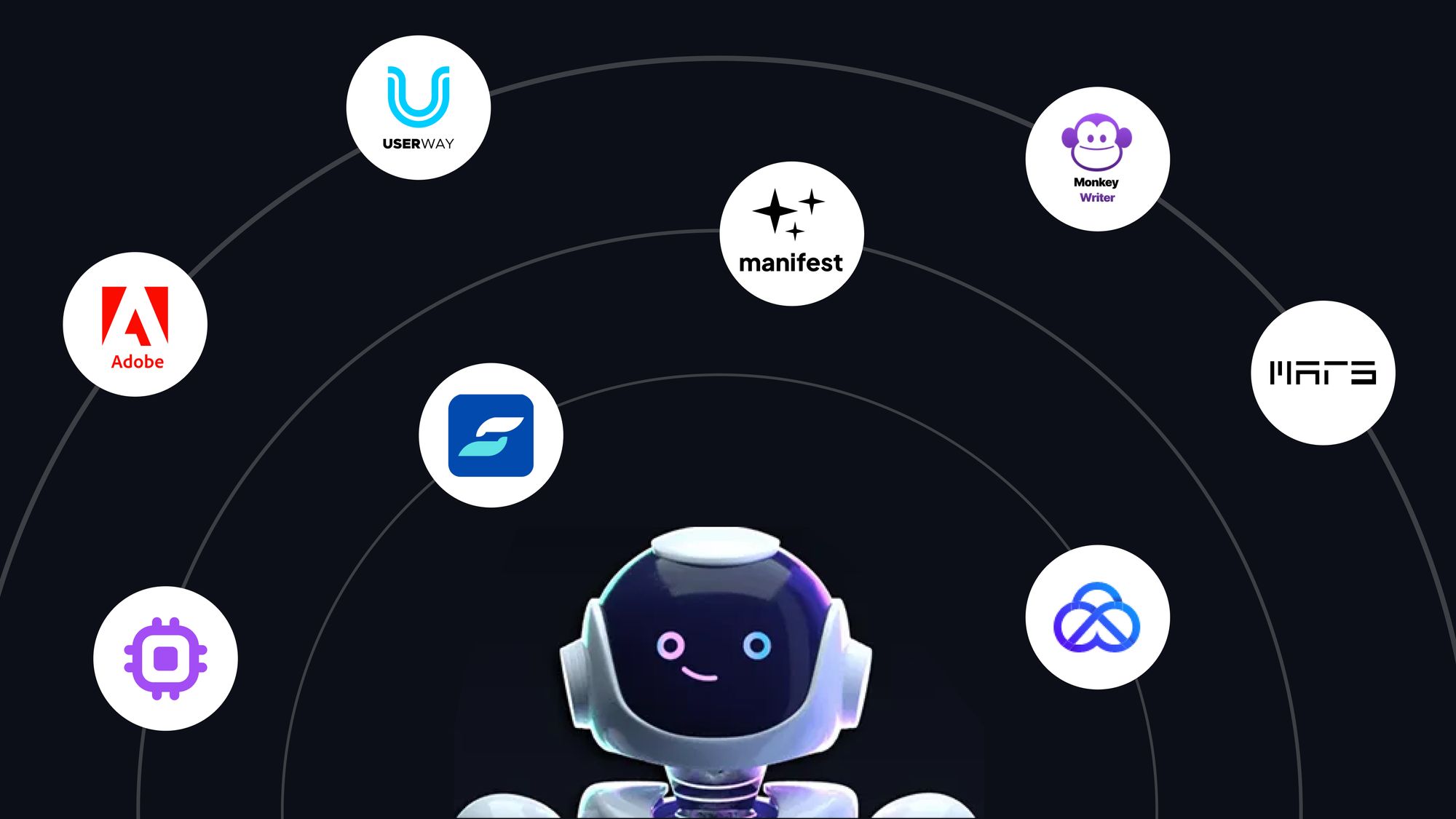Building an Efficient eCommerce Tech Stack

In today's digital age, eCommerce is more popular than ever before. In fact, global eCommerce sales are expected to reach $4.9 trillion by 2021. If you're an eCommerce business owner, it's important to have an efficient eCommerce tech stack to support your growth.
An eCommerce tech stack is the combination of software and hardware that powers your online store. It includes everything from your website platform to your payment gateway to your inventory management system.
A well-chosen eCommerce technological stack can help you improve the performance of your online store, provide a better customer experience, and grow your business.
In the next few sections, we'll discuss the different components of an eCommerce tech stack, the challenges of building an efficient eCommerce tech stack, and the solutions to those challenges. We'll also look at the future of eCommerce technology solutions.
Different Components of an eCommerce Tech Stack

Check the below list of tech stack for ecommerce sites and how it can help you grow your ecommerce store:
Ecommerce platform: The ecommerce platform is the foundation of your eCommerce store. It provides the functionality for customers to browse your products, add them to their cart, and checkout. Some popular ecommerce platforms include Shopify, Magento, and WooCommerce.
Payment gateway: The payment gateway is responsible for processing payments from your customers. It ensures that your customers' payment information is secure and that their payments are processed quickly and efficiently. Some popular payment gateways include Stripe, PayPal, and Braintree.
Shipping software: The shipping software helps you calculate shipping rates and print shipping labels. It can also help you track your shipments and communicate with your customers about their orders. Some popular shipping software providers include ShipStation, EasyPost, and Stamps.
Inventory management system: The inventory management system tracks your inventory levels and helps you prevent stockouts. It can also help you optimize your inventory levels to minimize costs and maximize profits. Some popular inventory management systems include NetSuite, SAP, and Microsoft Dynamics 365.
Customer relationship management (CRM) software: The CRM software helps you manage your customer data and interactions. It can help you track customer orders, manage customer complaints, and send personalized marketing messages. Some popular CRM software providers include Salesforce, HubSpot, and Zoho CRM.
Marketing automation software: The marketing automation tools for ecommerce helps you automate your marketing campaigns. It can help you send email marketing campaigns, track your website traffic, and measure your results. Some popular marketing automation software providers include BIK, Marketo, and Act-On Software.
Web analytics software: The web analytics software helps you track your website traffic and measure your results. It can help you see where your visitors are coming from, what pages they are visiting, and how long they are staying on your site. Some popular web analytics software providers include Google Analytics, Adobe Analytics, and Matomo.
Customer support platform: The customer support platform is used to manage customer inquiries and complaints. It can help you track customer interactions, resolve issues quickly and efficiently, and improve customer satisfaction. Some popular customer support platforms include Zendesk, Salesforce Service Cloud, and Freshdesk.
GPT-powered AI chatbot: A GPT-powered AI chatbot can be used to automate customer support tasks, such as answering FAQs and resolving simple issues. This can free up your customer support team to focus on more complex issues. Manifest AI is an example of a GPT-powered AI chatbot that can be used for customer support. The best thing about Manifest AI is, you can use it for free.
5 tips on building a best tech stack for eCommerce
Start with your goals: What do you want to achieve with your Shopify tech stack? Do you want to increase sales, improve customer service, or automate tasks? Once you know your goals, you can start to identify the tools and services that will help you achieve them.
Do your research: There are many different tech stacks available, so it's important to do your research and choose the ones that are right for your business. Consider your budget, your needs, and your level of technical expertise.
Choose the right tools: Not all tools are created equal. Some ecommerce tools are better suited for certain tasks than others. Make sure to choose the tools that will best meet your needs.
Integrate your tools seamlessly: Your tech stack should work together seamlessly to provide a smooth and efficient user experience. Make sure that your tools are compatible and that they can be easily integrated.
Maintain your tech stack regularly: Your tech stack is an investment, so it's important to maintain it regularly. This includes updating your software, monitoring your system, and backing up your data.
How Manifest AI helps scaling ecommerce brands

Manifest AI is a GPT-powered AI chatbot that can be used to automate customer support tasks, such as answering FAQs and resolving simple issues. This can free up your customer support team to focus on more complex issues. Manifest AI can also be used to personalize customer experiences, such as recommending products or offering discounts.
Here are some of the ways that Manifest AI can help scaling eCommerce brands:
- Seamless product discovery: Manifest AI can help store visitors in discovering products by just asking to the AI chatbot about their requirement.
- Improve customer satisfaction: Manifest AI can help improve customer satisfaction by providing customers with a quick and efficient way to get help.
- Increase sales: Manifest AI can help increase sales by personalizing customer experiences and recommending products that customers are likely to be interested in.
- Reduce Agent cost by 80% : Manifest AI can help improve efficiency by automating tasks and freeing up your team to focus on other tasks. This will handle most of the visitor queries and can reduce the agent cost up to 80%.
- Scale easily: Manifest AI can be scaled easily as your business grows.
- Multilingual support: Manifest AI understands 95+ languages which provides visitors a comfort of asking anything in their native language. This features can help you in reducing the bounce rate of your store.
Factors Affecting eCommerce Tech Stack
- Business size and complexity: The size and complexity of your business will affect the type of tech stack for ecommerce website you need. For example, a small business with a simple website may only need a few basic tools, while a large enterprise with a complex eCommerce platform will need a more robust tech stack.
- Budget: Your budget will also be a factor in determining your tech stack. There are a variety of tools and services available at different price points, so you'll need to find the ones that fit your budget.
- Technical expertise: The technical expertise of your team will also affect the type of tech stack you can use. If you have a team of experienced developers, you may be able to use more complex tools and services. However, if you have a team of less experienced users, you'll need to choose top ecommerce tools that are easy to use and manage.
- Industry: The industry you're in will also affect the type of tech stack you need. For example, a retail business will need different tools than a healthcare business.
- Security: Security is a top priority for any eCommerce business. You'll need to choose tools that are secure and that protect your customers' data.
- Scalability: Your tech stack needs to be scalable to accommodate your business growth. You'll need to choose tools that can be easily added or removed as needed.
- Future-proof: Your tech stack should be future-proof so that you can keep up with the latest trends. You'll need to choose tools that are flexible and can be adapted to new technologies.
Conclusion
In the intricate landscape of modern eCommerce, a well-constructed tech stack isn't just a collection of tools—it's a strategic advantage that propels businesses forward. The challenges of integrating, customizing, and optimizing various software solutions are met with solutions that emphasize compatibility, scalability, and user adoption. As we bid adieu to this exploration of the e-commerce tech stack, it's clear that its impact is profound. With the right blend of tools, careful planning, and adaptability, businesses can orchestrate seamless operations, elevate customer experiences, and position themselves at the forefront of innovation. As technology continues to evolve, the eCommerce tech stack remains an ever-evolving canvas for businesses to paint their digital success stories.

.png)
